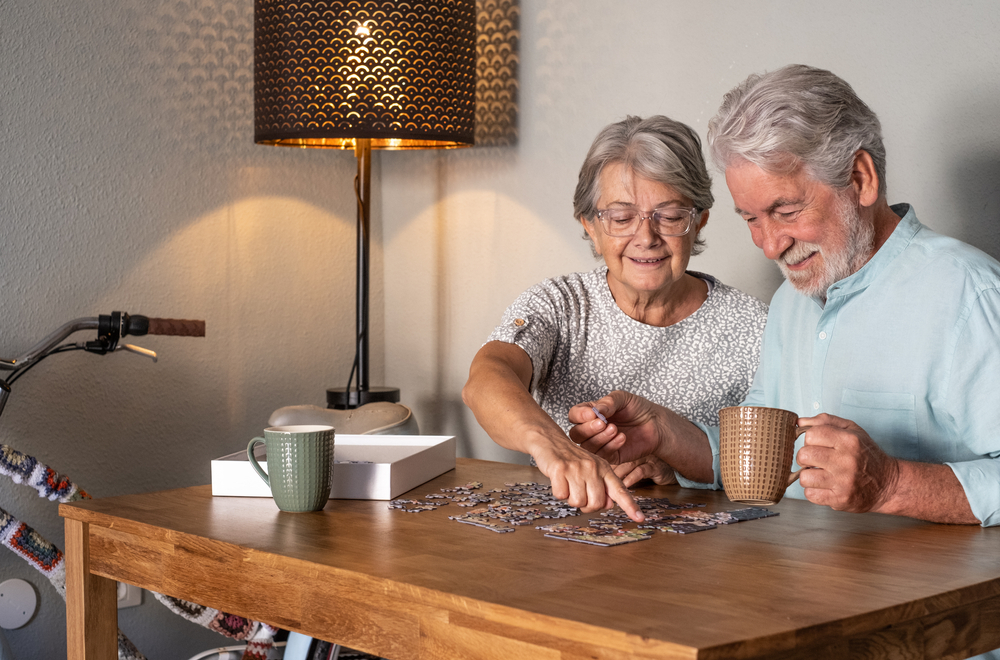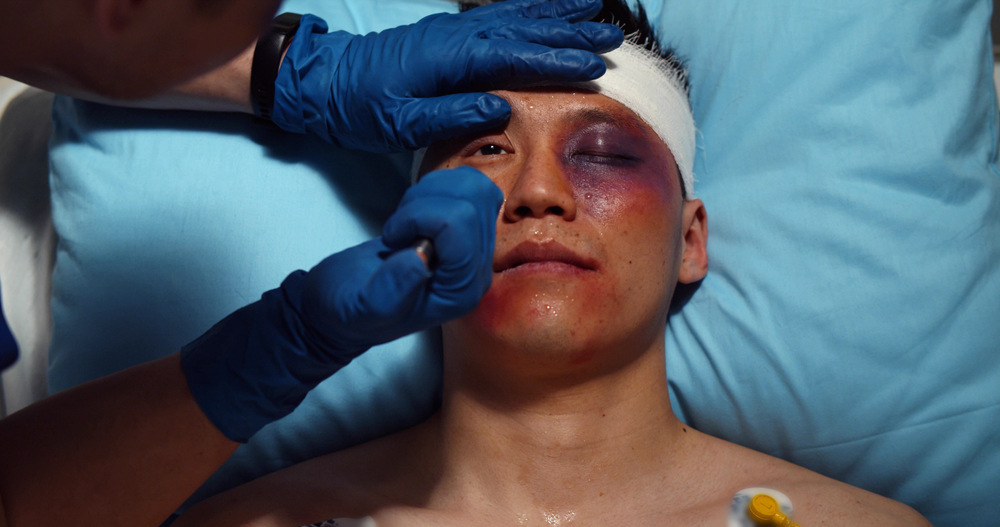Make an Appointment
Traumatic brain injury (TBI) affects thousands of Australians every year and can have profound impacts on cognitive function, communication, and the ability to perform everyday tasks. When a TBI occurs, the road to recovery is often long and multifaceted, requiring specialised interventions from various allied health professionals. In this blog, we explore how the collaboration between speech-language pathologists (SLPs) and occupational therapists (OTs) creates a powerful, integrated approach to rehabilitation for TBI patients. By combining their expertise, these professionals provide tailored therapies that address both communication challenges and daily living skills, empowering patients to regain independence and improve their quality of life.

What is Traumatic Brain Injury (TBI)?
Traumatic brain injury is an injury to the brain caused by an external mechanical force, such as a blow, jolt, or penetrating injury. TBIs can range from mild concussions to severe brain damage and may result in long-term cognitive, physical, and behavioural impairments. Common symptoms include memory loss, difficulty concentrating, speech and language difficulties, and problems with balance and coordination.
Why Is Multidisciplinary Rehabilitation Essential for TBI?
TBI recovery is complex and often requires addressing multiple deficits simultaneously. The brain is a highly adaptive organ, and early, coordinated intervention has been shown to improve neuroplasticity, the brain’s ability to rewire and adapt after injury. Research from the Australian Institute of Health and Welfare supports the notion that comprehensive, multidisciplinary rehabilitation can lead to better long-term outcomes for TBI patients by addressing cognitive, motor, and communication challenges in an integrated manner.
Challenges Faced by TBI Patients
Communication Difficulties:
TBI can result in aphasia or other language impairments, making it challenging for patients to express themselves or understand others.
Cognitive Impairments:
Difficulties with memory, attention, and problem-solving are common and can hinder everyday functioning and learning.
Motor Deficits:
Reduced coordination, balance issues, and muscle weakness can affect mobility and the ability to perform daily tasks.
Emotional and Behavioural Changes:
TBI may cause mood swings, increased irritability, and difficulties with self-regulation, further complicating rehabilitation.
Understanding these challenges is critical, as it underscores the need for a tailored, multidisciplinary approach to rehabilitation that focuses on maximizing recovery and independence.

The Role of Speech-Language Pathologists in TBI Rehabilitation
Speech-language pathologists (SLPs) play a central role in rehabilitating TBI patients by targeting the communication deficits and cognitive-communication challenges that often accompany brain injuries.
Language and Communication Rehabilitation:
SLPs assess and treat difficulties in speaking, understanding, reading, and writing. Techniques such as fluency shaping, articulation therapy, and language restructuring help improve expressive and receptive language abilities.
Cognitive-Communication Therapy:
In addition to traditional speech therapy, SLPs work on cognitive aspects such as attention, memory, and executive function. This may include structured exercises that improve problem-solving and the ability to follow multi-step instructions.
Social Communication Skills:
Therapists help patients navigate social cues and non-verbal communication, which are often affected by TBI. Group therapy sessions can also foster peer interaction and build pragmatic communication skills.
For more details on speech therapy interventions for TBI, refer to the resources provided by Speech Pathology Australia.
The Role of Occupational Therapists in TBI Rehabilitation
Occupational therapists (OTs) focus on helping TBI patients regain independence in everyday activities by addressing both cognitive and motor deficits.
Activities of Daily Living (ADL) Training:
OTs assess a patient’s ability to perform routine tasks like dressing, bathing, and meal preparation. They then devise strategies and adaptations to improve these skills.
Environmental Modifications:
By recommending home modifications, such as grab bars, improved lighting, and ergonomic adjustments, OTs help create safer living environments that support independence.
Sensory and Cognitive Strategies:
OTs also work on sensory integration and cognitive exercises to enhance overall functioning, helping patients manage the challenges of memory, attention, and self-care.
Functional Skills Development:
Interventions are highly personalised, often involving the use of adaptive equipment and task-specific training to promote greater autonomy.
For additional insights on occupational therapy for TBI, visit Occupational Therapy Australia.
How SLPs and OTs Collaborate to Enhance Outcomes
The collaboration between SLPs and OTs results in a holistic approach to TBI rehabilitation, where both communication and functional independence are addressed simultaneously:
Integrated Treatment Goals:
By working together, SLPs and OTs establish common goals that target both language skills and daily functioning. For example, a combined session might focus on practising a routine (such as preparing a simple meal) while using language exercises to enhance communication during the task.
Consistent Progress Monitoring:
Regular case conferences and joint assessments enable therapists to monitor progress cohesively, ensuring that adjustments to the treatment plan benefit all areas of recovery.
Family and Caregiver Involvement:
Collaborative therapy also emphasizes family training, equipping caregivers with strategies to support both communication and functional tasks at home. This approach fosters an inclusive environment where improvements are reinforced across settings.
For expert, integrated support, explore our Speech Pathology and Occupational Therapy services.

Here are some actionable strategies to enhance outcomes for TBI patients through collaborative speech-language pathology and occupational therapy interventions:
1. Develop a Unified Therapy Schedule
- Action: Create a weekly schedule that incorporates both speech and occupational therapy sessions.
- How It Helps: Ensures that therapy is consistent and that skills learned in one session are reinforced in another.
For details on integrated therapy scheduling, consult our Speech Pathology team.
2. Use Role-Playing and Simulation Techniques
- Action: Incorporate role-playing scenarios that combine everyday activities with speech practice. For example, simulate a phone conversation while preparing a meal or setting a table.
- How It Helps: Provides real-world context that reinforces functional communication and independence.
- Tip: Use objects and tools from the home environment to make role-plays realistic.
3. Leverage Technology for Consistency
- Action: Utilize telehealth platforms and interactive apps that support both speech and occupational therapy practices.
- How It Helps: Facilitates remote monitoring and regular practice, even when in-person sessions are not feasible.
- Tip: Explore apps specifically designed for TBI rehabilitation for cognitive-communication and functional tasks.
For integrated digital care, explore our Telehealth Services options.
4. Engage Caregivers Through Training and Workshops
- Action: Organise training sessions for parents and caregivers to educate them on supporting therapy at home.
- How It Helps: Reinforces strategies learned during professional sessions and ensures consistency in therapy practices at home.
- Tip: Provide resources and handouts that summarise key techniques.
For additional resources on caregiver training, see Carer Gateway.
5. Regular Joint Assessments
- Action: Schedule periodic joint assessments with both your SLP and OT to review progress and adjust treatment plans.
- How It Helps: Ensures that every component of the rehabilitation program evolves with the patient's needs and that interventions remain effective.
- Tip: Maintain a progress journal to track improvements and challenges.
To learn more about our comprehensive reassessment services, please visit our Occupational Therapy page.

Implementing a collaborative approach between speech-language pathologists and occupational therapists for TBI patients can lead to transformative outcomes. Here are some key benefits:
Improved Communication and Cognitive Function
Through specialised speech therapy, patients learn to express themselves more clearly and engage in meaningful conversations. This not only improves communication but also supports cognitive development by reinforcing memory and comprehension. Research from Speech Pathology Australia shows early intervention significantly improves language outcomes in TBI patients.
Enhanced Daily Function and Independence
Occupational therapy helps patients regain skills needed for everyday activities such as dressing, cooking, and managing personal care. This increases independence and reduces reliance on caregivers. Studies published in the Australian Journal of Occupational Therapy indicate that integrated OT interventions lead to improved ADL performance.
Holistic Recovery and Reduced Caregiver Burden
A coordinated, multidisciplinary approach enhances overall rehabilitation outcomes. When therapy is integrated, families benefit from a unified care plan that addresses both communication and functional skills, leading to a more supportive environment. Data from the NDIS highlights the benefits of integrated care models in reducing caregiver stress and improving patient outcomes.
Increased Confidence and Social Participation
Improving communication and daily functioning has a direct impact on social engagement. As patients regain their ability to interact effectively with others, their self-esteem and confidence flourish, leading to a better quality of life. The Australian Psychological Society supports the positive effects of multidisciplinary rehabilitation on social and emotional well-being.
By combining the strengths of both disciplines, patients experience a more comprehensive rehabilitation process that addresses both their cognitive and functional needs, leading to lasting, transformative outcomes.

Frequently Asked Questions
Q: What is traumatic brain injury (TBI) and how does it affect communication?
A: Traumatic brain injury is damage to the brain caused by an external force. It can affect speech, language, memory, and overall cognitive function. For more information, visit Better Health Channel – Brain Injuries.
Q: How do speech-language pathologists help TBI patients?
A: Speech-language pathologists work on improving language skills, communication, and cognitive-communication functions. They use techniques such as fluency shaping, articulatory exercises, and cognitive-communication therapy. More details can be found at Speech Pathology Australia.
Q: What role do occupational therapists play in TBI rehabilitation?
A: Occupational therapists help patients regain independence by improving their ability to perform daily tasks. They focus on adaptive strategies and environmental modifications to enhance functional independence. Learn more at Occupational Therapy Australia.
Q: Can therapy be provided remotely for TBI patients?
A: Yes, telehealth services allow for remote consultations and therapy sessions, ensuring continuous care regardless of location. This is particularly beneficial for patients in remote areas. For telehealth resources, visit NDIS Telehealth Services.
Q: How often should TBI therapy sessions be scheduled?
A: The frequency of sessions depends on the severity of the injury and individual progress. Many patients benefit from multiple sessions per week, with regular assessments to adapt the treatment plan.
Q: How does a multidisciplinary approach improve outcomes?
A: Integrating speech-language pathology and occupational therapy ensures that both communication and functional needs are addressed together. This holistic approach leads to better overall outcomes and improved quality of life for TBI patients.

In summary, a collaborative approach combining the expertise of speech-language pathologists and occupational therapists can profoundly improve outcomes for traumatic brain injury patients. By addressing both communication and functional challenges through integrated, multidisciplinary care, patients can achieve greater independence, better quality of life, and enhanced social participation. Embracing such a holistic treatment model not only accelerates recovery but also reduces the burden on families and caregivers.
If you or a loved one is ready to explore how integrated therapy can transform TBI recovery, contact us today to book an appointment or make a referral. To learn more about our comprehensive services, please explore:
Live a life with less limits.

Date Published: Tuesday, April 15, 2025
Locate a Occupational Therapy Telehealth
Service Near me
Get the experience & convinence you deserve to support your or a loved one's allied health needs.
Our Occupational Therapy Telehealth team are currently serving & taking appointments in the following states and regions in Australia:
Need to get into direct contact with ur Client Services team? We're all ears. Call our team directly on 1300 731 733





